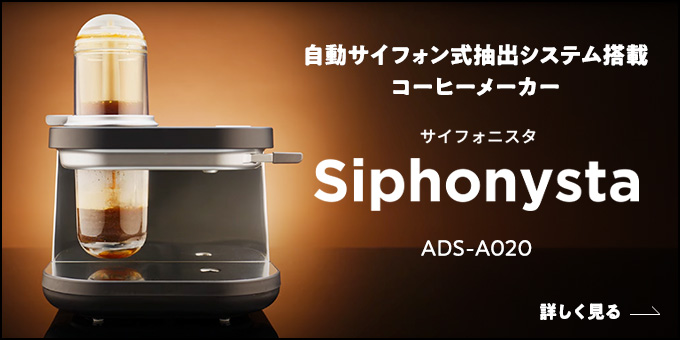The unyielding manufacturing quality of the Siphonysta from the perspective of a world-class siphon professional
In September 2023, Mr. Nakayama of The Syphonist was appointed official ambassador of the Siphonysta, an automatic siphon extraction system created by Tiger. To commemorate the occasion, Mr. Nakayama had a deep dialogue with a Tiger planning officer about everything from the secret story of the Siphonysta’s development to the appeal of the product.
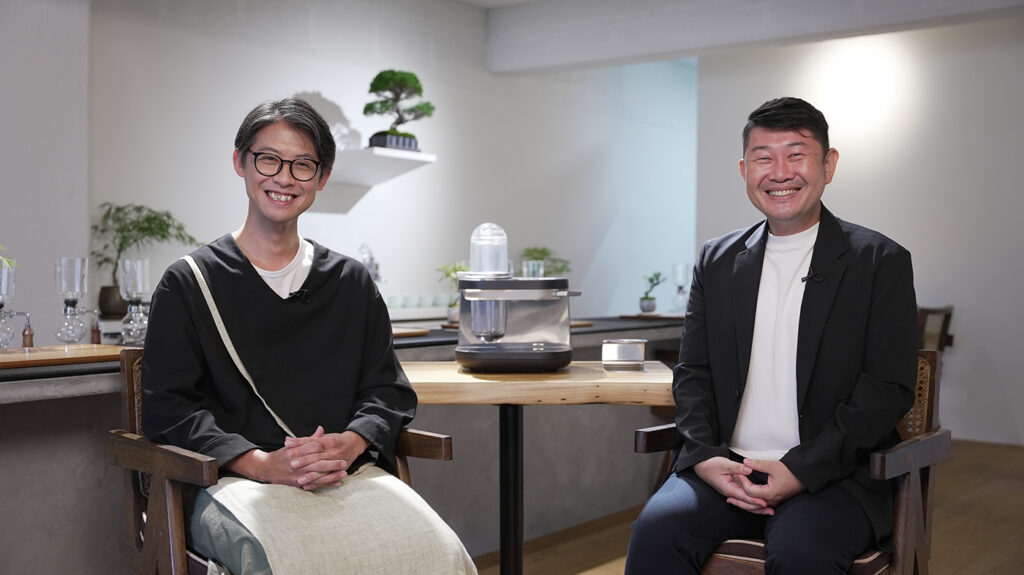
Speaker Profiles
Shuso Izumi (right): Planning officer for coffee makers at the Solutions Group, Tiger Corporation. Izumi created the original proposal for the Siphonysta.
Yoshinobu Nakayama (left): Head of the Syphonist. He won the Japan Siphonist Championship (JSC) three times and was runner-up at the World Siphonist Championship (WSC) twice. In September 2023, he became an ambassador of the Siphonysta.
Watch the conversation here:
Episode 1 “Encounter with and charm of siphon coffee”:https://youtu.be/dD4yxY-I_Vk
Episode 2 “How Siphon Coffee works and the secret behind the development of Siphonysta”:https://youtu.be/OHdZm5whQxs
Episode 3:“Siphonysta’s special points and impressions after actually using it”:https://youtu.be/KFMLGJb0dm4
Episode 4 “Coffee brewed with a Siphonysta”:https://youtu.be/nN2G39bn1bg
Izumi Once again, thank you for taking the role of ambassador of the Siphonysta.
To commemorate the anniversary of your appointment as ambassador, which is today, I would like to talk to you about various topics related to siphon coffee and the Siphonysta. I also want to mention that your shop is a spectacular place, Mr. Nakayama.
Nakayama Thank you.
Saihon no Ma is a siphon specialty shop that just opened in Nagoya in June 2023. The concept behind this shop was to create a place where you can enjoy a cup of aromatic siphon-brewed coffee while admiring a small bonsai tree placed just next to you.
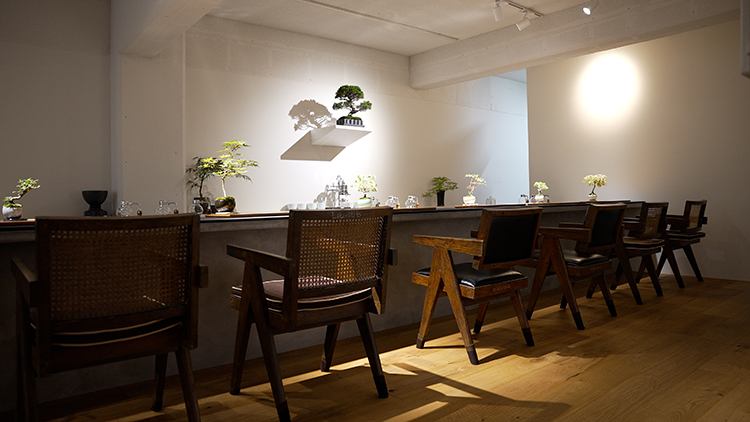
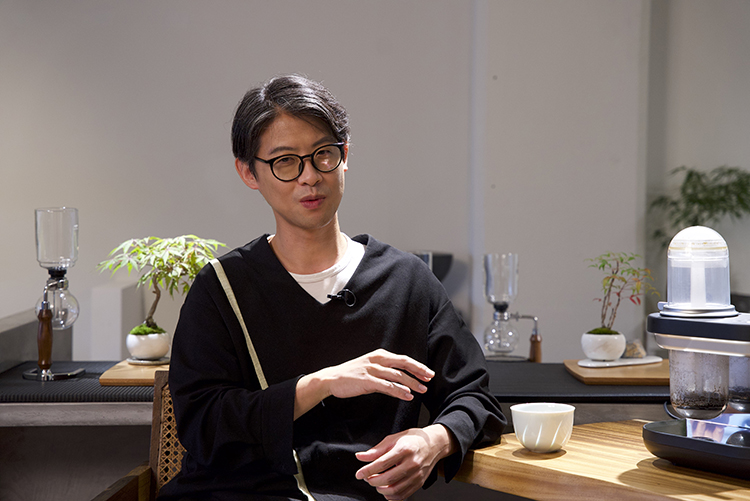
Izumi That’s fantastic. How did you learn about siphon coffee, Mr. Nakayama?
Nakayama When I first got into the world of coffee, I grabbed a siphon that I happened to have, and without any idea as to what I was doing, I brewed a cup. The result was a delicious cup of coffee that surprised me enough to change my outlook on life. I thought that if I could control this delicious flavor, or if I could have others try this fragrant cup of coffee that I had been trying to make, I would be able to bring joy to so many people. That’s why I stepped foot in the world of siphoning.
How about you, Mr. Izumi? What made you want to create a siphon coffee maker?
Izumi My first motive was not about creating a siphon machine. I happened to enter a shop that sells specialty coffee※1. They hand drip their coffee. When I tried it, I was surprised at how different it tasted from the coffee I usually drink. I wanted to drink it again, so I bought an appliance and tried to brew it at home, but I wasn’t able to reproduce it well. I thought, “Why doesn’t mine taste good? I should build a machine that will allow me to drink delicious specialty coffee.” That was where it all started. After doing a lot of research, I learned that specialty coffee is evaluated by cupping※2. Unlike drip coffee, in which hot water is passed through the grounds, cupping is an immersion method, just like the method used in a French press※3 or a siphon. I wanted to create a new machine that takes this immersion method of siphoning to the next level to brew specialty coffee with great taste.
※1 Coffee that has been properly cultivated, harvested, processed, sorted and quality-controlled in the country of origin; passes the criteria for the cup evaluation; and has excellent flavor characteristics
※2 A sensory evaluation method in which the quality of each type of coffee is compared under the same conditions
※3 An apparatus for brewing coffee by pouring ground coffee and hot water into a container, soaking it for a certain period of time, then pressing the cover with a metal filter into the container to strain the liquid
Nakayama I think “specialty coffee” is a very important buzzword right now. Specialty coffee is actually often brewed at relatively high temperatures, regardless of the method. The reason is that beans with high potential are rich in flavor when brewed at high temperature, and the high-quality components are thoroughly extracted. We live in an era in which the quality of beans is improving, so I thought it was the perfect time for me to focus on siphoning, a brewing method that uses high temperatures.
Drinking the Fragrance of Coffee: The Appeal and Mechanism Behind Siphon Coffee
Izumi What is the appeal of siphon coffee for you, Mr. Nakayama?
Nakayama There’s the beautiful appearance of the siphon and the amazing movement and presentation. But at the same time, many of you out there might think it looks difficult to use, or that you wouldn’t know what to do with it. But for me, that’s part of what makes it such a fascinating tool. It’s more laborious than a hand-drip coffee maker, and it can be somewhat difficult to use, but there’s still a good reason to brew coffee with a siphon. When it comes down to it, it’s about good flavor. Coffee brewed with a siphon tastes a bit different compared to other brewing methods. I think that’s biggest appeal of siphon coffee.
Izumi What exactly is the siphon brewing method? There may be many out there who don’t know what it is.
Nakayama A flask containing hot water is heated by the fire of an alcohol lamp. The boiling water becomes water vapor, which causes the air to expand in volume. When the air expands inside, the force of expansion causes the water to move from the bottom to the top and mix with the coffee.
Then, when you put out the fire, the flask cools and the steam inside condenses again. As it condenses, the flask is in a vacuum, so the coffee on top gets sucked up and filtered through a filter put in place in advance before dropping down.
The coffee that drops down is what we call siphon coffee. The principle behind brewing with a coffee siphon is to use these forces of expansion and contraction.
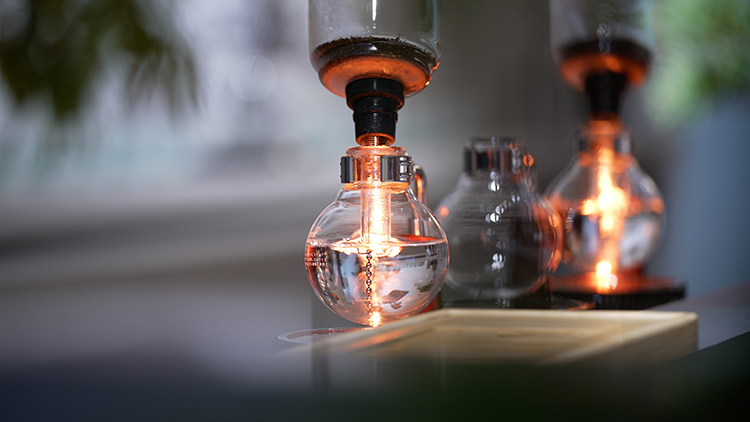
When brewed at such high temperatures and short brewing times, siphon coffee has a pleasant aroma and a very refreshing taste. I often use the expression, “to drink the aroma of the coffee.” This sensation is what makes siphon coffee so appealing.
In this way, the Siphonysta incorporates the principle and appeal of coffee siphons, but can you tell us how it works?
A demonstration of coffee being brewed with the Siphonysta
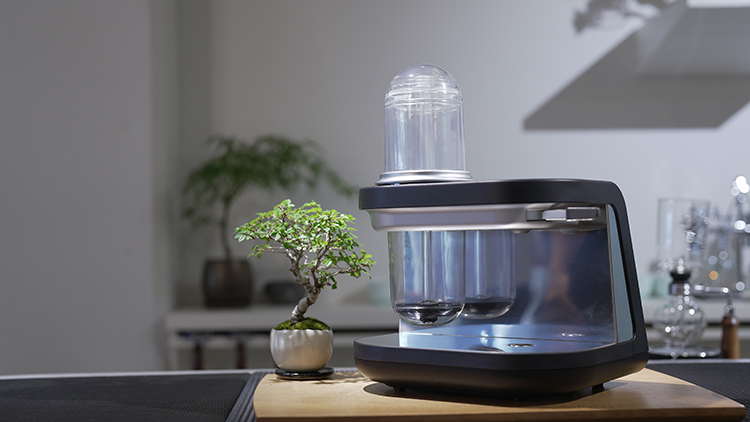
Izumi In principle, they are very similar. There are also other methods, such as the immersion method of extracting tea by steeping it in hot water, using steam, or using a decompression mechanism, as in the case of Japanese tea and black tea, but I’d like you to actually see and feel what it’s like.
The coffee is made in a transparent cylinder that has a top part and a bottom part. You pour the ground coffee in the bottom cylinder and the water in the top cylinder. Then, close the cover tightly and set up the machine.
On the top panel, there are seven buttons in total, three for the level of acidity or bitterness, and three for intensity of flavor, for a total of nine different flavor combinations (3 × 3). There is also a Dual Temp button, which activates the function for two-step temperature extraction (changing the temperature from high to low during the extraction process). I will use these settings to brew coffee today.
Izumi When you press Start, the extraction process begins automatically. The water in the upper cylinder gradually disappears and turns into steam.
Nakayama Where is this water heated?
Izumi It’s heated in a special built-in heater in the back.
Nakayama When I first used it, I was surprised at how fast the water heats up. It usually takes time to heat up a siphon. This must be the result of Tiger technology. So then, this hot steam comes in contact with the coffee and steams it, right?
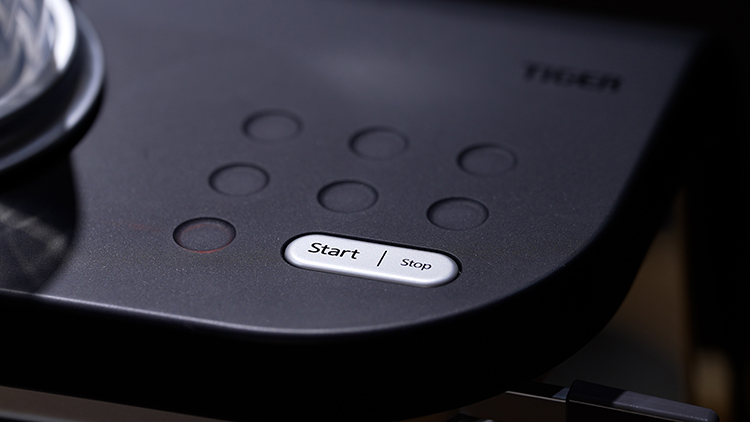
Izumi That’s right. Then, the hot water accumulates here and the immersion process begins.
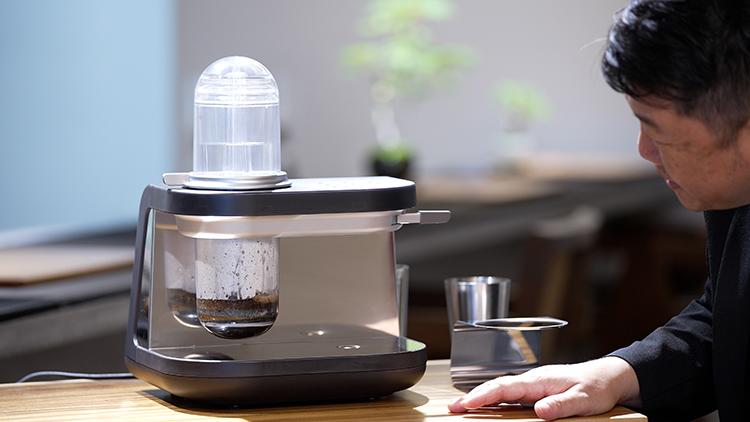
Nakayama The coffee grounds bloom when you steam it first like this. This blooming is what brings out the components of the coffee beans even more. It’s also fun to watch the blooming process.
Izumi That’s something we paid a lot of attention to.
Now, the machine is using the steam to stir the coffee. A wooden spatula would normally be used for siphon coffee, but this is a very difficult and technical task, so the Siphonysta takes care of it automatically.
Nakayama Then, finally, there’s the spouting of the fountain.
Izumi That’s also something we paid special attention to.
Okay, the coffee is done now. Place the cup here, pull the lever, and enjoy watching the coffee pour out.
Nakayama The process must have taken about three or four minutes. It’s great because the coffee will be ready before you finish getting ready in the morning.
The wall that stood in the way of the development of the Siphonysta
Nakayama As someone who uses a siphon, I used to think that a machine wouldn’t be able to replicate the movement of a siphon. It must have been very difficult for you to accomplish this on the Siphonysta.
Izumi What was important for us was to make it as easy as possible to brew siphon coffee. However, it was very difficult to control the process in order to achieve the appropriate amount of stirring, as well as separation and filtration at the optimal timing.
The most difficult part turned out to be making the fountain spurt. The seal and the timing were difficult to get right.
Nevertheless, we wanted to offer everyone a different way to enjoy the coffee from conventional coffee makers, and that’s what we focused on. The development team worked very hard to make it happen. It may sound easy when I describe in words, but to finally get there, it took a lot of building and rebuilding while checking the flavor all along the way.
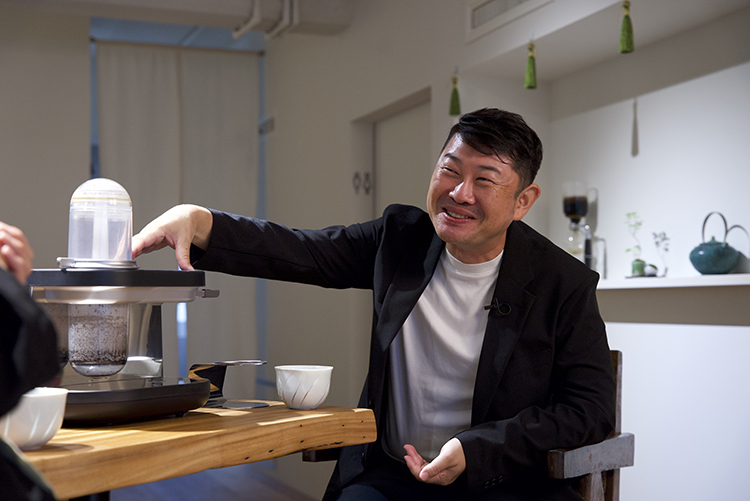
Nakayama The thing about coffee is that, even when it’s brewed by a professional, it’s not like anyone gets to decide the “correct” taste. So, there must have been a lot of trial and error during the development process.
Tiger’s unique functions and attention to detail
Nakayama As a representative of Tiger, do you have any other points to recommend about this product?
Izumi We have developed this product with the aim of making it easy and convenient to brew tasty “specialty coffee” at home. Conventional siphon coffee makers are hard to clean, but this cylinder component is dishwasher-safe. In addition, we made it possible to produce nine different flavors so that you can easily try a variety of tastes.
I also want to mention this single, special button. The Dual Temp function that you just tried out is a two-stage temperature extraction function in which the first stage of extraction is carried out at a higher temperature, while the second stage is carried out at a lower temperature. By using this feature, you can bring out the natural taste of the beans while suppressing the undesirable flavors that tend to come out during the second stage of extraction. The function uses Tiger heat control technology, which earned high praise from professionals when we exhibited at a specialty coffee exhibition.
What about from the perspective of a siphon professional? What did you like about the Siphonysta?
Nakayama My first impression can be summarized in one word—fantastic. I was surprised that such flavor could be produced easily and automatically at home. As I went about actually trying out the machine, a feeling of excitement began to brew in me as to what was going to happen. As someone tasked with spreading the appeal of siphon coffee, I was very happy to find that this component of excitement was still there [when using the Siphonysta]. The process still allows you to enjoy the fun and excitement of the actual steaming of the beans, the stirring, and the extracted coffee, which all culminates in the finale of coffee gushing out like a fountain. I thought that was just fantastic.
The metal filter and upside-down cylinder are key
Nakayama Also, you may not notice this unless you’re a professional, but the Siphonysta uses a metal filter, which is typical of French presses. One characteristic of [stainless steel] metal filters is that compared to other filters, they don’t strain as much of the coffee oil, so more of the aromatic components end up in the coffee. In other words, the resulting coffee is more fragrant. However, when using a metal filter, some fine coffee powder may find its way into your cup.
After being brewed in the Siphonysta, the coffee moves from the bottom to the top. Compared to a conventional siphon, the movement is upside down. In other words, because the movement is upside down, the fine powder that results due to the metal filter doesn’t make its way into the coffee liquid as much. You can also enjoy the oil floating on top of the coffee, which I thought was amazing, because the mechanism combines the best aspects of a siphon and a French press.
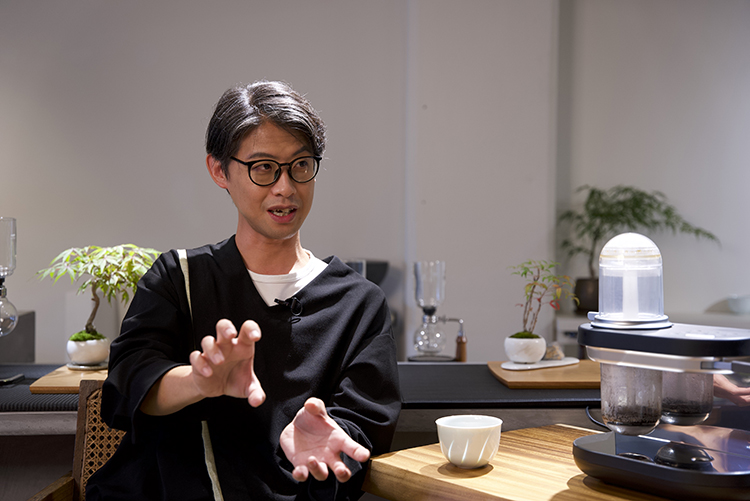
Nakayama Another aspect I liked is the ability to change the temperature partway through using the two-stage temperature extraction function you mentioned earlier. In professional siphon competitions, there are tricks you can use, like adding water to change the temperature in the middle of the process, but the technique to controlling the temperature is very difficult.
By equipping the Siphonysta with this function, you’ve made it possible to suppress undesirable flavors, resulting in an overall balanced taste. The fact that you can easily do this at the touch of a button on the Siphonysta is a testament to how advanced Tiger’s heat control technology is.
Izumi Thank you. What did you think of the essential flavor? Please share your honest opinions.
Nakayama I think it’s really delicious. If it wasn’t, I don’t think I would have taken the position of ambassador. The machine is able to reproduce the same exquisite aroma and refreshing taste that’s characteristic of siphon coffee. I think that the fact that you can enjoy such delicious coffee at home is what makes the Siphonysta so amazing.
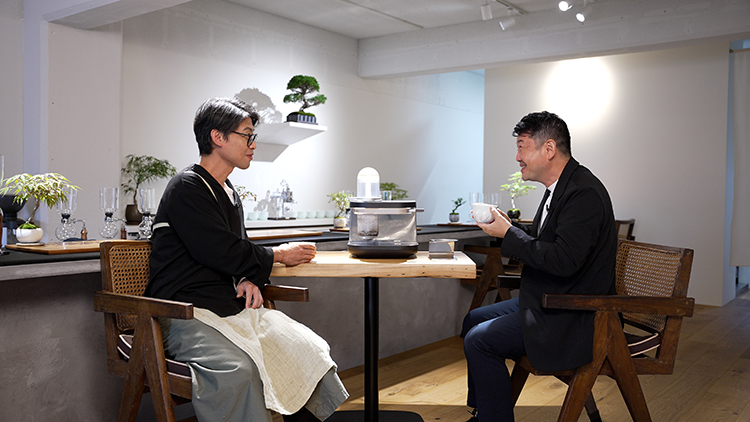
Izumi Thank you for your time today. We have gone through a lot of hard work to complete this product, the Siphonysta. I am very happy that we have been able to bring something to the world that you appreciate, Mr. Nakayama. Together, I hope we can continue to spread siphon coffee and the Siphonysta to the world. I look forward to working with you.
Nakayama Thank you very much for your work. I look forward to working with you, too.
* The comments above include the speakers’ personal views.
